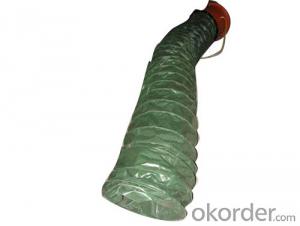Metal roofing has been a popular choice for homeowners and businesses alike, thanks to its durability, low maintenance, and aesthetic appeal. However, one aspect that often gets overlooked is the importance of insulation and underlayment in ensuring the longevity and performance of your metal roof. In this article, we’ll explore the role of metal roofing insulation and underlayment, the benefits they offer, and how to choose the right products for your roofing project.
The Unsung Heroes: Insulation and Underlayment
While the metal roof itself is the star of the show, insulation and underlayment are the unsung heroes that work behind the scenes to protect your home or business. They serve as the first line of defense against various elements, including moisture, heat, and cold. Without proper insulation and underlayment, your metal roof may not perform as expected, and you could face issues such as condensation, energy inefficiency, and even structural damage over time.
Why Insulation Matters
Insulation is crucial for maintaining a comfortable indoor environment and for energy efficiency. It helps to keep your space warm in the winter and cool in the summer, reducing the load on your HVAC system and lowering your energy bills. When it comes to metal roofing, insulation plays a dual role. It not only provides thermal insulation but also acts as a sound barrier, reducing noise transmission from outside sources.
Thermal Efficiency
The thermal efficiency of your metal roof is significantly impacted by the type and quality of insulation you choose. High-quality insulation materials, such as polyisocyanurate or spray foam, can provide excellent thermal resistance, keeping your home comfortable year-round.
Sound Barrier
In addition to thermal benefits, insulation also serves as a sound barrier. This is particularly important for homes located near busy roads or airports, where noise pollution can be a significant issue. Insulation materials with higher density can effectively dampen external noises, creating a quieter living environment.
The Role of Underlayment
Underlayment is a layer of material that sits between the roof deck and the metal panels. It is designed to protect the roof from moisture and other elements that could potentially cause damage. There are several types of underlayment materials available, each with its own set of benefits and applications.
Types of Underlayment Materials
1. Felt Paper: A traditional choice, felt paper is made from asphalt-saturated organic or fiberglass fibers. It is cost-effective and provides basic moisture protection.
2. Synthetic Underlayment: Made from materials like polyester or polypropylene, synthetic underlayments offer better durability and resistance to tearing compared to felt paper. They also allow for better ventilation, reducing the risk of ice dams and mold growth.
3. Peel and Stick Underlayment: This type of underlayment is self-adhesive and easy to install. It is particularly useful for metal roofing systems, as it provides an additional layer of protection against moisture and wind-driven rain.
Benefits of Underlayment
– Moisture Protection: Underlayment prevents moisture from penetrating the roof deck, reducing the risk of leaks and water damage.
– Wind Resistance: It helps to protect the roof from wind-driven rain, which can force moisture under the metal panels.
– Ventilation: Proper ventilation is essential for preventing ice dams and mold growth. Underlayment materials that allow for airflow can help maintain a healthy roof environment.
– Durability: High-quality underlayment can withstand harsh weather conditions and extend the life of your metal roof.
Choosing the Right Insulation and Underlayment
When selecting insulation and underlayment for your metal roofing project, it’s essential to consider several factors, including the climate, the type of roof, and your specific needs.
Climate Considerations
Different climates require different types of insulation and underlayment. For example, in colder climates, you may need insulation with higher R-values to ensure adequate thermal resistance. In areas with heavy rainfall, a synthetic underlayment with good ventilation properties can help prevent moisture-related issues.
Roof Type and Design
The type of roof you have and its design can also influence your choice of insulation and underlayment. For instance, a steep-slope roof may require different underlayment options compared to a low-slope roof.
Personal Needs and Preferences
Your personal needs and preferences should also be taken into account. If you prioritize energy efficiency, you may opt for insulation with higher R-values. If noise reduction is a concern, you might choose materials with better sound barrier properties.
Installation Tips for Insulation and Underlayment
Proper installation is key to ensuring the effectiveness of your insulation and underlayment. Here are some tips to keep in mind:
– Ensure Proper Ventilation: Make sure your roof design allows for adequate ventilation to prevent moisture buildup.
– Seal All Seams and Edges: Proper sealing is crucial to prevent air and moisture leaks. Use high-quality sealants and follow the manufacturer’s instructions.
– Follow Manufacturer’s Guidelines: Always follow the guidelines provided by the insulation and underlayment manufacturers to ensure optimal performance.
– Hire Professionals: If you’re not confident in your ability to install insulation and underlayment correctly, consider hiring professionals to ensure the job is done right.
The Bottom Line
Metal roofing insulation and underlayment may not be the most glamorous aspects of a roofing project, but they are essential for the overall performance and longevity of your metal roof. By understanding their importance and choosing the right products for your specific needs, you can ensure that your metal roof stands up to the test of time, protecting your home or business from the elements and providing a comfortable, energy-efficient environment. So, the next time you think about metal roofing, don’t forget about these unsung heroes – they deserve the spotlight too!

